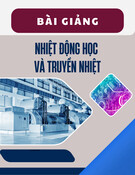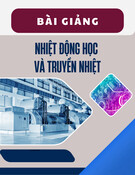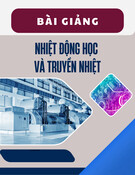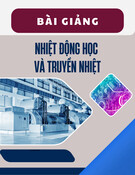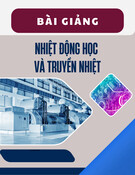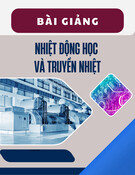
MIL-HDBK-1003/3
a) Keep the input and output points to the minimum
number required for HVAC control and efficient building
operation. Follow the recommended point guidance provided in
par. 8.2. Follow the principle to "Keep it Simple."
b) Use standard control sequences for similar HVAC
control system applications.
c) Show the following on control drawings as a
minimum:
(1) Flow diagram schematic of each mechanical
system showing sensors, equipment, and operators.
(2) Individual point list description for each
mechanical system.
(3) Electrical ladder diagram for each electrical
circuit controlled.
(4) Operating parameters - controller setpoints
and time schedules.
(5) Detailed sequence of operation.
d) Use direct connection of temperature sensors when
possible. Use only precision thermistors (10,000 ohms) for room
sensing and 1000 ohm platinum RTDs for HVAC unit sensing.
e) Use room zone temperature sensors with pushbutton
override and setpoint adjustment integral to the sensor.
f) Do not modify the chiller microprocessor system
supplied with the equipment. Control and safety functions should
be the chiller manufacturer's responsibility. The DDC system
should only enable or disable the chiller, chilled water pump,
condenser water pump, and in some cases chilled water and
condenser water reset. For chillers 150 tons and larger, provide
an RS-485 communication between the chiller microprocessor and
the DDC system.
g) Do not modify the boiler microprocessor system
supplied with the equipment. Control and safety functions should
be the boiler manufacturer's responsibility. Design hot water
systems to maintain the boiler manufacturer's minimum temperature
when in operation but vary the hot water supply temperature as
required to meet the building's requirements.
106
Simpo PDF Merge and Split Unregistered Version - http://www.simpopdf.com

MIL-HDBK-1003/3
h) Connect steam, high temperature hot water, gas, and
electric meters to the DDC for remote monitoring of energy use of
the building.
8.2 Standard Sequences of Operations
8.2.1 General Requirements. These requirements shall apply
to primary HVAC systems unless modified herein. The sequences
describe actions of the control system in one direction of change
in the HVAC process analog variable, such as temperature,
humidity, or pressure. The reverse sequence shall occur when
direction of change is reversed unless specifically modified.
8.2.2 Operation of HVAC System. Equipment shall be operated
in the optimized start, occupied, or unoccupied modes.
a) The optimized start mode energizes the equipment at
maximum capacity at the latest time required for heating up (or
cooling down) the space to normal occupied temperature
conditions.
b) The occupied mode maintains the occupied conditions
under all load variations while providing required ventilation.
Supply fan operates continuously.
c) The unoccupied mode cycles the equipment to
maintain a minimum heating temperature (or a maximum cooling
temperature) in the space while providing no ventilation.
8.2.3 Operation of Outside Air, Return Air, and Exhaust
(Relief) Air Dampers
a) Optimized Start Mode: Outside air and exhaust air
dampers are closed and return air dampers are opened.
b) Occupied Mode: Outside air dampers are opened to
the minimum ventilation air position. If an economizer outside
air cycle is provided, the outside air, return air, and exhaust
air dampers are automatically controlled. An outdoor air dry
bulb sensor disables the economizer cycle and maintains minimum
ventilation air when the outside air dry bulb temperature exceeds
the changeover point.
c) Unoccupied Mode: Outside air and exhaust air
dampers are closed and return air dampers are opened.
8.2.4 Operation of Filtration System. Differential pressure
sensor measuring static pressure drop across the filter shall
initiate alarm when pressure drop exceeds recommended value.
107
Simpo PDF Merge and Split Unregistered Version - http://www.simpopdf.com

MIL-HDBK-1003/3
8.2.5 Operation of Freeze Protection. A freezestat with an
extended surface sensing element, located ahead of the chilled
water coil, shall stop the supply fan, return system components
to their fail-safe position, and initiate a low-temperature alarm
if the temperature at any point of the sensing element falls
below the setpoint. Normal operation will occur only after the
freezing condition is corrected and the freezestat is manually
reset.
8.2.6 Operation of Smoke Detectors. Duct type smoke
detectors located in the supply fan discharge air duct and in the
return air duct (as required by NFPA) shall stop the supply fan,
return system components to their fail-safe position, and shall
activate the smoke alarm if either detector senses the presence
of smoke. Normal operation will occur only after the smoke is
cleared and the detector(s) is manually reset.
8.2.7 Operation of Chilled Water Coil Discharge Control. A
dry bulb temperature sensor located in the chilled water coil
discharge air shall, on a rise in temperature, first, gradually
close the preheat coil valve, next, gradually open the outside
air damper from its minimum ventilation air position while
simultaneously gradually close the return air damper (ensure
thorough mixing) and gradually opening the exhaust air damper,
and then gradually open the chilled water coil valve. An outdoor
air dry bulb sensor disables the economizer cycle and maintains
minimum ventilation air when outside air dry bulb temperature
exceeds the changeover point.
8.2.8 Operation of Preheat Coil Control. (Where required by
outdoor design temperatures and ventilation air requirements.)
A dry bulb temperature low limit sensor located in the mixed air
(ensure thorough mixing) shall, on a fall in temperature,
gradually open the preheat coil valve. Primary control shall be
sequenced by the chilled water coil discharge sensor or supply
air sensor.
8.2.9 Operation of Heating Coil Control. A dry bulb
temperature sensor located in the heating coil discharge air
shall, on a rise in dry bulb air temperature, gradually close the
heating coil valve.
8.2.10 Operation of Space Control (Single Zone Unit). A room
type dry bulb temperature sensor located in the most critical
spot shall, on a rise in dry bulb temperature in the space, first
gradually close the heating coil valve, next gradually close the
preheat coil valve, then gradually open the outside air damper
from its minimum ventilation air position while simultaneously
gradually close the return air damper (ensure thorough mixing)
108
Simpo PDF Merge and Split Unregistered Version - http://www.simpopdf.com

MIL-HDBK-1003/3
and gradually opening the exhaust air damper, and finally
gradually open the chilled water coil valve. A dry bulb
temperature low limit sensor located in the mixed air (ensure
thorough mixing) shall, on a fall in temperature, gradually open
the preheat coil valve. An outdoor air dry bulb sensor disables
the economizer cycle and maintains minimum ventilation air when
outside air dry bulb temperature exceeds the changeover point.
8.2.11 Operation of Space Control (Multizone Unit). A room
type dry bulb temperature sensor located in the most critical
spot shall, on a rise in dry bulb temperature in the space,
gradually open the cold deck damper while simultaneously
gradually close the hot deck damper.
8.2.12 Operation of Space Control (VAV Terminal Unit -
Pressure Dependent). A room type dry bulb temperature sensor
located in the most critical spot shall, on a rise in dry bulb
temperature in the space, gradually open the VAV terminal box
cold air valve.
8.2.13 Operation of Supply Duct Pressure Control. A supply
duct static pressure sensor located two-thirds the distance from
the fan of the length of the longest supply duct run shall, on a
rise in static pressure, gradually reduce the speed of the
electric motor variable speed drive and close the fan vortex
damper. A high-limit duct static pressure sensor located at the
fan discharge shall override the supply duct static pressure
sensor to limit pressures to design values.
8.3 Single Zone Unit Sequence of Operations (Sample). See
Figure 33 and Table 15.
a) General: Sequences describe actions of the control
system in one direction of change in the HVAC process analog
variable, such as temperature, humidity, or pressure. Reverse
sequence shall occur when direction of change is reversed unless
specifically modified.
b) Optimized Start Mode: Energize equipment at
maximum capacity at the latest time required for heating up (or
cooling down) the space to normal occupied temperature
conditions. Outside air and exhaust air dampers are closed and
return air dampers are opened.
c) Occupied Mode: Maintain occupied conditions under
load variations while providing required ventilation. Supply fan
operates continuously. Outside air dampers are opened to the
minimum ventilation air position. If an economizer outside air
cycle is provided, the outside air, return air, and exhaust air
109
Simpo PDF Merge and Split Unregistered Version - http://www.simpopdf.com

MIL-HDBK-1003/3
dampers are automatically controlled. An outdoor air dry bulb
sensor disables the economizer cycle and maintains minimum
ventilation air when outside air dry bulb temperature exceeds the
changeover point.
d) Unoccupied Mode: Cycle the equipment to maintain
minimum heating temperature (or maximum cooling temperature) in
the space while providing no ventilation. Outside air and
exhaust air dampers are closed and return air dampers are opened.
e) Maintenance and Safety Mode: A differential
pressure sensor measuring static pressure drop across the filter
shall initiate an alarm when the pressure drop exceeds the
recommended value.
A freezestat with extended surface sensing element
located ahead of the chilled water coil shall stop the supply
fan, return system components to their fail-safe position, and
initiate a low-temperature alarm if the temperature at any point
of the sensing element falls below the setpoint. Normal
operation shall occur only after the freezing condition is
corrected and the freezestat is manually reset.
f) Room Control Mode: A room type dry bulb
temperature sensor located in the most critical spot shall, on a
rise in dry bulb temperature in the space, first gradually close
the heating coil valve, next gradually close the preheat coil
valve, then gradually open the outside air damper from its
minimum ventilation air position while simultaneously gradually
close the return air damper (ensure thorough mixing) and
gradually opening the exhaust air damper, and finally gradually
open the chilled water coil valve. A dry bulb temperature low
limit sensor located in the mixed air (ensure thorough mixing)
shall, on a fall in temperature, gradually open the preheat coil
valve. A dry bulb temperature low limit sensor located in the
supply air shall, on a fall in temperature, gradually open the
heating coil valve. An outdoor air dry bulb sensor disables the
economizer cycle and maintains minimum ventilation air when
outside air dry bulb temperature exceeds the changeover point.
8.4 Multizone Unit Sequence of Operation (Sample). See
Figure 34 and Table 16.
a) General: Sequences describe actions of the control
system in one direction of change in the HVAC process analog
variable, such as temperature, humidity, or pressure. Reverse
sequence shall occur when direction of change is reversed unless
specifically modified.
110
Simpo PDF Merge and Split Unregistered Version - http://www.simpopdf.com

![Hệ thống HVAC và Dehumidifying: Tổng quan [Năm hiện tại]](https://cdn.tailieu.vn/images/document/thumbnail/2012/20120202/luly_meo1/135x160/hvac_and_dehumidifiying_systems_b_split_14_8134.jpg)
![Hệ thống HVAC và Dehumidifying: Tổng quan [Năm hiện tại]](https://cdn.tailieu.vn/images/document/thumbnail/2012/20120202/luly_meo1/135x160/hvac_and_dehumidifiying_systems_b_split_13_3651.jpg)
![Hệ thống HVAC và Dehumidifying: [Thêm từ mô tả/định tính để tăng CTR]](https://cdn.tailieu.vn/images/document/thumbnail/2012/20120202/luly_meo1/135x160/hvac_and_dehumidifiying_systems_b_split_12_8041.jpg)
![Hệ thống HVAC và Dehumidifying: [Thông tin chi tiết/Hướng dẫn/Lựa chọn]](https://cdn.tailieu.vn/images/document/thumbnail/2012/20120202/luly_meo1/135x160/hvac_and_dehumidifiying_systems_b_split_11_4149.jpg)
![Hệ thống HVAC và hệ thống hút ẩm: [Thông tin chi tiết/Hướng dẫn/Lựa chọn tốt nhất]](https://cdn.tailieu.vn/images/document/thumbnail/2012/20120202/luly_meo1/135x160/hvac_and_dehumidifiying_systems_b_split_10_7992.jpg)
![HVAC và Hệ thống Hút Ẩm: [Thêm thông tin chi tiết để tối ưu SEO]](https://cdn.tailieu.vn/images/document/thumbnail/2012/20120202/luly_meo1/135x160/hvac_and_dehumidifiying_systems_b_split_9_3668.jpg)
![HVAC và Dehumidifying Systems: Hệ thống điều hòa không khí và hút ẩm [chuẩn SEO]](https://cdn.tailieu.vn/images/document/thumbnail/2012/20120202/luly_meo1/135x160/hvac_and_dehumidifiying_systems_b_split_7_2859.jpg)
![HVAC và Dehumidifying Systems: [Mô tả chi tiết/Hướng dẫn/Đánh giá]](https://cdn.tailieu.vn/images/document/thumbnail/2012/20120202/luly_meo1/135x160/hvac_and_dehumidifiying_systems_b_split_6_8164.jpg)
![Hệ thống HVAC và Dehumidifying: [Thông tin chi tiết/Hướng dẫn/Lựa chọn]](https://cdn.tailieu.vn/images/document/thumbnail/2012/20120202/luly_meo1/135x160/hvac_and_dehumidifiying_systems_b_split_5_3816.jpg)
![HVAC và Dehumidifying Systems: [Thêm thông tin chi tiết để tối ưu SEO]](https://cdn.tailieu.vn/images/document/thumbnail/2012/20120202/luly_meo1/135x160/hvac_and_dehumidifiying_systems_b_split_4_7836.jpg)
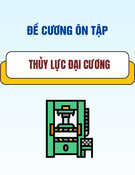





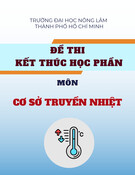
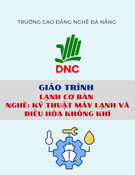
![Ngân hàng trắc nghiệm Kỹ thuật lạnh ứng dụng: Đề cương [chuẩn nhất]](https://cdn.tailieu.vn/images/document/thumbnail/2025/20251007/kimphuong1001/135x160/25391759827353.jpg)
